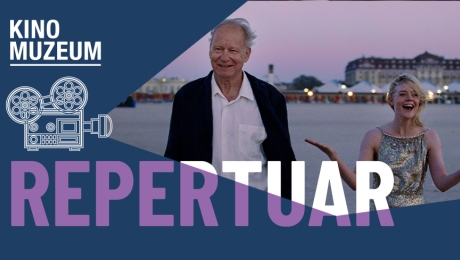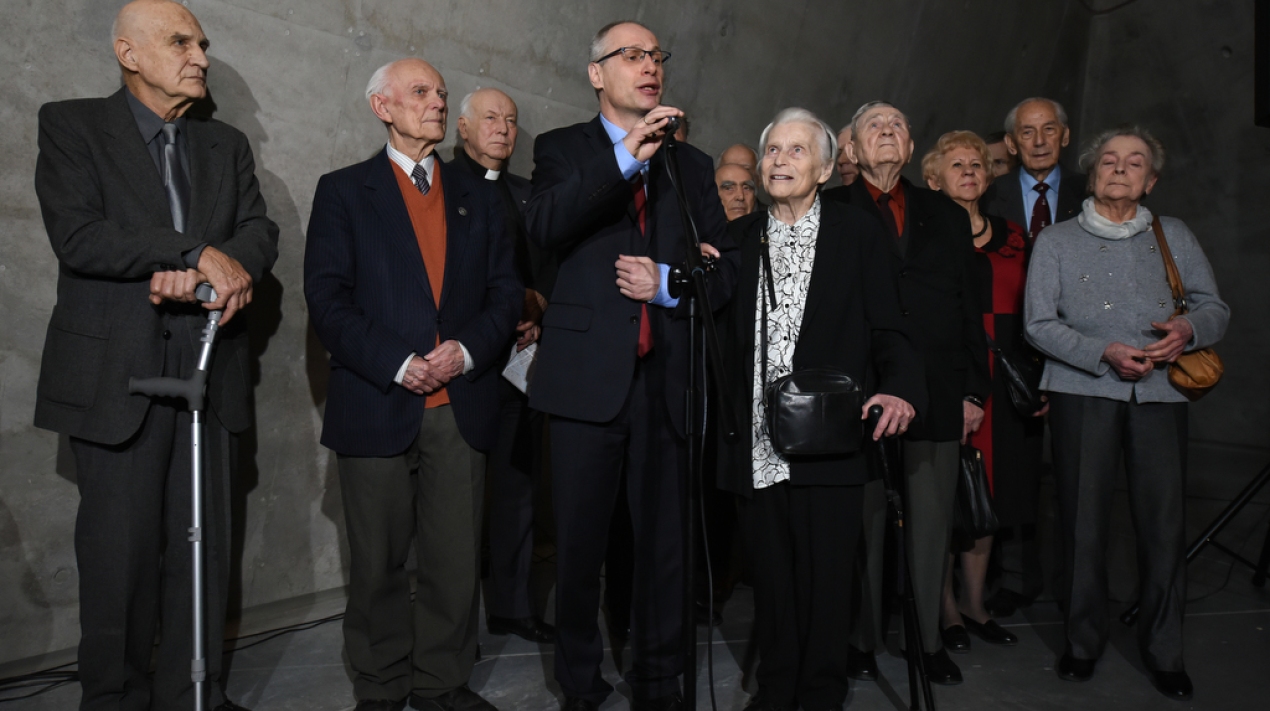Opening of the Museum of the Second World War - 23 March 2017
At 10 o’clock on 23 March 2017, the Museum of the Second World War was opened to the visitors. The ceremony was kept low key. Invited thereto were veterans and donors. The guests included e.g. Prof. Joanna Penson, liaison officer of the Union of Armed Struggle, then prisoner of the Ravensbrück concentration camp, Prof. Jerzy Grzywacz, President of the Pomeranian Chapter of theWorld Association of Home Army Soldiers, Olga Krzyżanowska, daughter of Aleksander “Wilk” [Wolf] Krzyżanowski – commander of the Home Army in the Vilnius Region, and Andrzej Stachecki whose father was executed in Piaśnica by the Germans and whose memorabilia the son has passed to the Museum. The first hosted guests also included donors to the Museum and school students.
Extending his greetings, the Director, Prof. Paweł Machcewicz, said:
– After eight years’ effort, we are honoured to present our main exhibition to the public. We trust the exhibition will trigger a debate on the Polish history, and give foreigners an insight into the frequently turbulent life stories of the Poles and their history. The goal of the exhibition is to highlight the unique features of the Polish history by weaving it into the canvas of the international context. This is the largest historical museum in Poland and one of the largest in the world. The aim the exhibition attempts to achieve is to paint the broadest possible picture of the war without limiting itself to the military aspects, and therefore we give an overview politics, ideology, and war seen through the eyes of common civilians. The exhibition pays tribute to the slaughtered. It is the effect of contributions from thousands of private individuals who donated their memorabilia of the times of war. This Museum is built of family stories.
– This opening, though low-key, carries an air of solemnity to us. The first steps inside will be reserved to those for whom and thanks to whom the museum has been built: prisoners of concentration camps, the deported, veterans, and donors. We have young people with us too, and museums build historic awareness – Prof. Machcewicz said.
The first visitor around the exhibition, accompanied by the Museum director, was Prof. Jaonna Penson. The museum ticket offices launched the sale of tickets on the same day. One can also book a ticket on line from the Museum website.
Its permanent exhibition covering almost 5,000 square meters, the Museum of the Second World War in Gdańsk is the largest historical museum in Poland. Located on the bottom level of the building, 14 meters underground, it talks about the tragic experience of the Second World War, its genesis and consequences, its victims and perpetrators, its heroes and the common folk.
The Museum of the Second World War was intended as an institution which would present the Second World War by combining the Polish perspective with the experience of other European nations. Designed by the 'Kwadrat’ Architectural Studio from Gdynia, the museum building is located on Władysława Bartoszewskiego Square, on the River Motława, close to the historic center of the city.
The permanent exhibition consists of three narrative blocks: “The Road to War,” “The Horrors of War,” and “The War’s Long Shadow.” It is divided into 18 thematic sections, which is reflected in the layout of the exhibition rooms. The exhibition contains approx. 2,000 exhibits, and there are also as many as ca. 240 modern multimedia consoles, which enable the visitors to browse through archival photographs and footages, watch video testimonies of the witnesses of those events, and study interactive maps of battles or of the shifting national borders during the Second World War. It was designed by the Belgian Tempora studio, whereas the Cracow Nolabel studio is responsible for its multimedia section. A tender for making the permanent exhibition was won by Qumak S.A.
One section of the permanent exhibition presents the everyday life during the Second World War and there is also an exhibition for children below the age of twelve, titled “Time travel.” It contains three rooms which are reconstructions of an apartment of a Warsaw family during three different periods: several days after the outbreak of the Second World War, during the German occupation, and immediately after the war. The changing elements of the interior design reflect the changing political and social situation in the occupied and fighting country.
Museum of the Second World War in Gdańsk
Władysława Bartoszewskiego Square 1; 80-862 Gdańsk
Main entrance: stairs from the square
Opening hours:
Tuesday–Sunday 10 a.m.–7 p.m.
Las admission to the permanent exhibition at 5 p.m.















